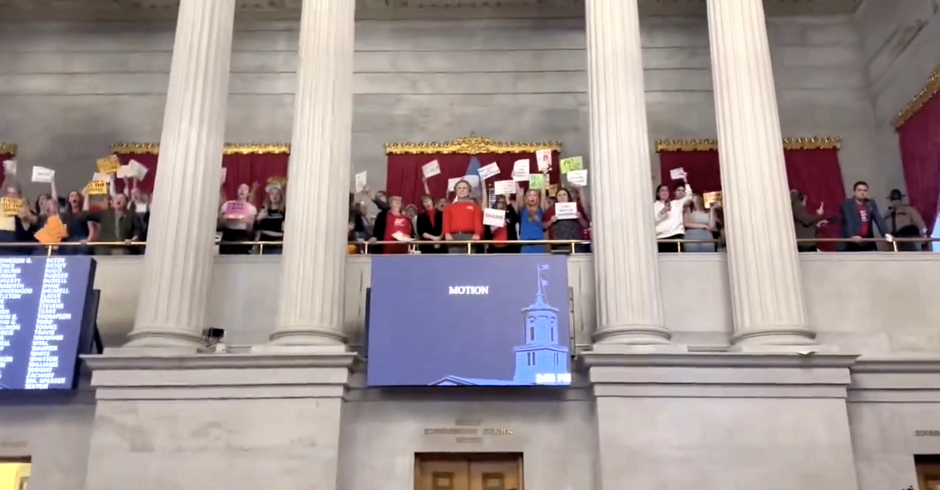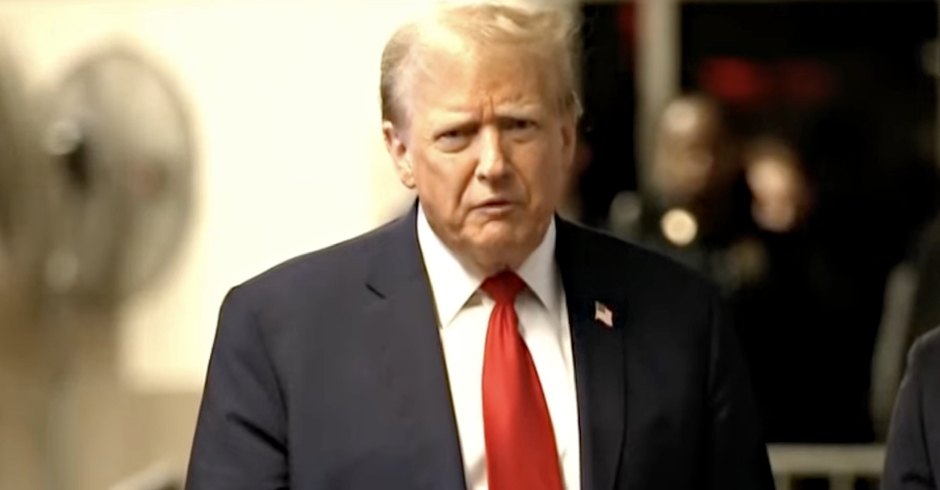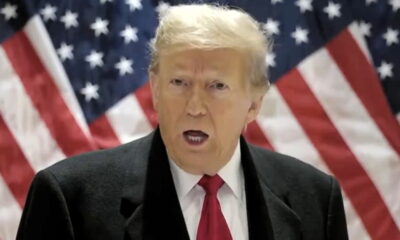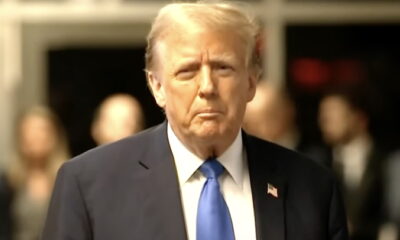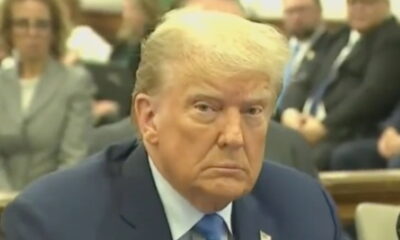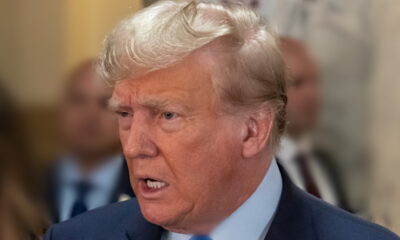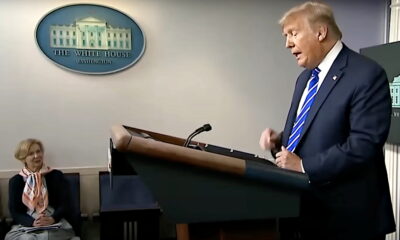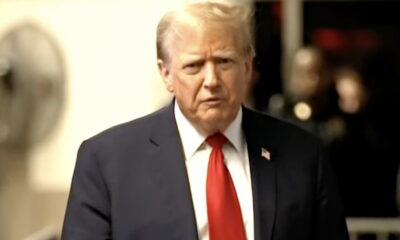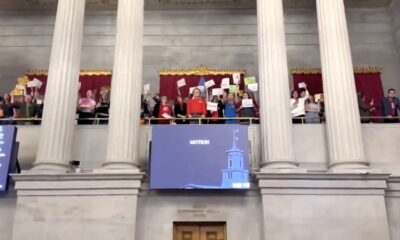Read: President Barack Obama’s Historic Declaration Designating Stonewall Inn a National Monument
President Obama Has Just Declared Stonewall a National Monument – the First Ever Dedicated to LGBT Civil Rights
President Barack Obama has honored the LGBT community and the nation by designating the Stonewall Inn a national monument dedicated to the LGBT community’s fight for civil rights.Â
The White House released a video today honoring Stonewall, with President Obama narrating.Â
President Obama’s top aide, Valerie Jarrett, posted this tweet:
I am thrilled to celebrate the designation of the Stonewall National Monument, the first #LGBT monument of its kind https://t.co/oZmaIQFdMU
— Valerie Jarrett (@vj44) June 24, 2016
And the National Park Service posted this welcome message:
Welcome to the family #412: Stonewall National Monument https://t.co/w1LtqJp595 #FindYourPark #Pride2016 pic.twitter.com/tROnnPKbUT
— NationalParkService (@NatlParkService) June 24, 2016
Above, a photo of President Obama meeting in the Oval Office with Gilbert Baker, the creator of the Rainbow Pride flag.
Here is the President’s historic declaration:
Â
Presidential Proclamation — Establishment of the Stonewall National Monument
ESTABLISHMENT OF THE STONEWALL NATIONAL MONUMENT
– – – – – – –
BY THE PRESIDENT OF THE UNITED STATES OF AMERICA A PROCLAMATION
Â
Christopher Park, a historic community park located immediately across the street from the Stonewall Inn in the Greenwich Village neighborhood of New York City (City), is a place for the lesbian, gay, bisexual, and transgender (LGBT) community to assemble for marches and parades, expressions of grief and anger, and celebrations of victory and joy. It played a key role in the events often referred to as the Stonewall Uprising or Rebellion, and has served as an important site for the LGBT community both before and after those events.
As one of the only public open spaces serving Greenwich Village west of 6th Avenue, Christopher Park has long been central to the life of the neighborhood and to its identity as an LGBT-friendly community. The park was created after a large fire in 1835 devastated an overcrowded tenement on the site. Neighborhood residents persuaded the City to condemn the approximately 0.12-acre triangle for public open space in 1837. By the 1960s, Christopher Park had become a popular destination for LGBT youth, many of whom had run away from or been kicked out of their homes. These youth and others who had been similarly oppressed felt they had little to lose when the community clashed with the police during the Stonewall Uprising.
In the early morning hours of June 28, 1969, a riot broke out in response to a police raid on the Stonewall Inn, at the time one of the City’s best known LGBT bars. Over the course of the next several days, more demonstrations and riots occurred in the surrounding neighborhood including Christopher Park. During these days, because of its strategic location across from the bar, Christopher Park served as a gathering place, refuge, and platform for the community to voice its demand for LGBT civil rights. The Stonewall Uprising is considered by many to be the catalyst that launched the modern LGBT civil rights movement. From this place and time, building on the work of many before, the Nation started the march — not yet finished — toward securing equality and respect for LGBT people.
Christopher Park and its environs have remained a key gathering place for the LGBT community. For example, on June 26, 2015, within moments of the issuance of the Supreme Court’s historic ruling in Obergefell v. Hodges, LGBT people headed to Christopher Park to celebrate the Court’s recognition of a constitutional right to same-sex marriage. A few days later, Governor Cuomo continued that celebration by officiating at the marriage of two gay men directly outside the Stonewall Inn. Within minutes of the recent news of the murders of 49 people in a nightclub in Orlando, Florida — one of the most deadly shootings in American history — LGBT people and their supporters in New York headed again to Christopher Park to mourn, heal, and stand together in unity for the fundamental values of equality and dignity that define us as a country.
Today, Christopher Park is surrounded by brick sidewalks and a nineteenth century wrought-iron fence with gated openings. Educational signs about the Stonewall Uprising are found near the large arched main entryway. Divided into two halves, the western side of the park is open to the public on a daily basis and contains a small plaza lined with brick pavers and benches. George Segal’s sculpture, “Gay Liberation,” stands as a focal point of the plaza. The sculpture was commissioned in 1979 on the tenth anniversary of the Stonewall Uprising, and its installation in 1992 cemented Christopher Park’s role as a destination for those wishing to understand the significance of the Stonewall Uprising. The eastern half of the park contains two structures erected in 1936: a statue of Civil War General Philip Sheridan, and a memorial flagstaff and plaque honoring Colonel Ephraim Elmer Ellsworth, an officer with the New York Fire Zouaves during the Civil War.
Across the street from Christopher Park is the target of the June 28, 1969, police raid, the Stonewall Inn (51-53 Christopher Street), originally built in 1843 and 1846 as two separate two-story horse stables. In 1930, the two buildings were combined into one commercial space with a new single exterior facade. In 1934, the first-floor space opened as a restaurant called Bonnie’s Stonewall Inn, which served the neighborhood for over 30 years. The restaurant closed in 1966, but was reopened in 1967 as an LGBT bar called the Stonewall Inn.
The streets and sidewalks in the neighborhood surrounding Christopher Park and the Stonewall Inn are an integral part of the neighborhood’s historic character and played a significant role in the Stonewall Uprising. The narrow streets bend, wrap back on themselves, and otherwise create directional havoc. In the early 1800s, the residents rejected the City’s attempts to enlarge the neighborhood streets and align them with the City’s grid plan, and the extension of Seventh Avenue South through the area in the early 1900s only added confusion. During the Stonewall Uprising, this labyrinthine street pattern helped the LGBT demonstrators, who knew the neighborhood, to evade riot-control police, who were not from the local precinct.
Viewed from Christopher Park’s central location, this historic landscape — the park itself, the Stonewall Inn, the streets and sidewalks of the surrounding neighborhood — reveals the story of the Stonewall Uprising, a watershed moment for LGBT civil rights and a transformative event in the Nation’s civil rights movement on par with the 1848 Women’s Rights Convention at Seneca Falls and the 1965 Selma-to-Montgomery March for voting rights in its role in energizing a broader community to demand equal rights.
Although the 1960s were a time of social and political change that brought greater freedom to many segments of society, these new-found freedoms did not extend to members of the LGBT community. They faced increased oppression and criminal prosecution even for being physically intimate with consensual partners. In New York City, LGBT people were frequently arrested for acts such as same-sex dancing and kissing and wearing clothes of the perceived opposite gender. In some States, adults of the same sex caught having consensual sex in their own home could receive sentences of up to life in prison or be confined to a mental institution, where they faced horrific procedures, such as shock therapy, castration, and lobotomies. LGBT Americans lived their lives in secrecy for fear of losing their jobs, being evicted from their homes, or being arrested. For LGBT people of color or living in poverty, life was especially challenging.
For over a century, Greenwich Village has attracted Americans of all kinds with an interest in political activism and nonconformity. By the 1930s, Greenwich Village was home to a significant LGBT community. Despite the aggressive anti-LGBT policies and practices that emerged in the City in the 1950s and 60s, a variety of bars, nightclubs, restaurants, hotels, and private clubs catered to an LGBT clientele. Many establishments lasted only a few months before police raided them and shut them down, a practice that intensified during mayoral election years such as 1969.
The police frequently raided LGBT bars for illegally selling alcoholic drinks to “homosexuals.” LGBT bars operated by organized crime syndicates often paid off members of the police force and in return received tips about when raids were planned. As part of a crackdown on LGBT bars in June 1969, the Public Morals squad of Manhattan’s First Police Division raided the Stonewall Inn on June 24, 1969, confiscated its liquor, and arrested its employees. The Stonewall Inn reopened the next day. Having made only minimal impact with this raid, the police decided to plan a surprise raid for the following Friday night or Saturday morning, when the bar would be crowded.
On June 28, 1969, undercover police officers raided the Stonewall Inn around 1:15 a.m., after one of them witnessed the illegal sale of alcohol. Customers resisted the police by refusing to show identification or go into a bathroom so that a police officer could verify their sex. As police officers began making arrests, the remaining customers gathered outside instead of dispersing as they had in the past. They cheered when friends emerged from the bar under police escort, and they shouted “Gay Power!” and “We Want Freedom!”. As word spread, the gathering grew in size and a riot ultimately ensued. Around 3:00 a.m., the City’s riot-control force appeared, and started to push the crowd away from the Stonewall Inn. But the crowd refused to disperse. Groups of demonstrators retreated to nearby streets, only to cut back and regroup near the Stonewall Inn and Christopher Park. The riot finally abated about 4:30 a.m., but during the next week several more protests formed, and in some cases, led to new riots and confrontations with the police.
The Stonewall Uprising changed the Nation’s history. After the Stonewall incident, the LGBT community across the Nation realized its power to join together and demand equality and respect. Within days of the events, Stonewall seemed to galvanize LGBT communities across the country, bringing new supporters and inspiring LGBT activists to organize demonstrations to show support for LGBT rights in several cities. One year later, the number of LGBT organizations in the country had grown from around 50 to at least 1,500, and Pride Marches were held in a number of large cities to commemorate the Stonewall Uprising.
The quest for LGBT equality after Stonewall evolved from protests and small gatherings into a nationwide movement. Lesbian women, gay men, bisexual and transgender people united to ensure equal rights for all people regardless of their sexual orientation or gender identity. Hard-fought civil rights victories in courtrooms and statehouses across the country set the stage for victories in the Supreme Court that would have seemed unthinkable to those who rose up in Greenwich Village in June 1969. Today, communities, cities, and nations celebrate LGBT Pride Days and Months, and the number of Pride events approaches 1,000. The New York City Police Department now has an LGBT Liaison Unit to build positive relations with the LGBT community, and provides the community with expert protection when threats are identified. Most importantly, the Nation’s laws and jurisprudence increasingly reflect the equal treatment that the LGBT community deserves. There is important distance yet to travel, but through political engagement and litigation, as well as individual acts of courage and acceptance, this movement has made tremendous progress toward securing equal rights and equal dignity.
WHEREAS, section 320301 of title 54, United States Code (known as the “Antiquities Act”), authorizes the President, in the President’s discretion, to declare by public proclamation historic landmarks, historic and prehistoric structures, and other objects of historic or scientific interest that are situated upon the lands owned or controlled by the Federal Government to be national monuments, and to reserve as a part thereof parcels of land, the limits of which in all cases shall be confined to the smallest area compatible with the proper care and management of the objects to be protected;
WHEREAS, in 2000, the Secretary of the Interior (Secretary) designated the Stonewall Inn, Christopher Park, and portions of the surrounding neighborhood as a National Historic Landmark for its association with the Stonewall Uprising, a momentous event that inspired a national LGBT civil rights movement;
WHEREAS, for the purpose of establishing a national monument to be administered by the National Park Service, the City of New York has donated to the Federal Government fee title to the approximately 0.12-acre Christopher Park;
WHEREAS, the designation of a national monument at the site of the Stonewall Uprising would elevate its message and story to the national stage and ensure that future generations would learn about this turning point that sparked changes in cultural attitudes and national policy towards LGBT people over the ensuing decades;
WHEREAS, it is in the public interest to preserve and protect Christopher Park and the historic objects associated with it in the Stonewall National Historic Landmark;
NOW, THEREFORE, I, BARACK OBAMA, President of the United States of America, by the authority vested in me by section 320301 of title 54, United States Code, hereby proclaim the objects identified above that are situated upon lands and interests in lands owned or controlled by the Federal Government to be the Stonewall National Monument (monument) and, for the purpose of protecting those objects, reserve as a part thereof all lands and interests in lands owned or controlled by the Federal Government within the boundaries described on the accompanying map, which is attached to and forms a part of this proclamation. The reserved Federal lands and interests in lands encompass approximately 0.12 acres. The boundaries described on the accompanying map are confined to the smallest area compatible with the proper care and management of the objects to be protected.
All Federal lands and interests in lands within the boundaries described on the accompanying map are hereby appropriated and withdrawn from all forms of entry, location, selection, sale, or other disposition under the public land laws, from location, entry, and patent under the mining laws, and from disposition under all laws relating to mineral and geothermal leasing.
The establishment of the monument is subject to valid existing rights. If the Federal Government acquires any lands or interests in lands not owned or controlled by the Federal Government within the boundaries described on the accompanying map, such lands and interests in lands shall be reserved as a part of the monument, and objects identified above that are situated upon those lands and interests in lands shall be part of the monument, upon acquisition of ownership or control by the Federal Government.
The Secretary shall manage the monument through the National Park Service, pursuant to applicable legal authorities, consistent with the purposes and provisions of this proclamation. The Secretary shall prepare a management plan, with full public involvement and in coordination with the City, within 3 years of the date of this proclamation. The management plan shall ensure that the monument fulfills the following purposes for the benefit of present and future generations: (1) to preserve and protect the objects of historic interest associated with the monument, and (2) to interpret the monument’s objects, resources, and values related to the LGBT civil rights movement. The management plan shall, among other things, set forth the desired relationship of the monument to other related resources, programs, and organizations, both within and outside the National Park System.
The National Park Service is directed to use applicable authorities to seek to enter into agreements with others, and the New York City Department of Parks and Recreation in particular, to enhance public services and promote management efficiencies.
Nothing in this proclamation shall be deemed to revoke any existing withdrawal, reservation, or appropriation; however, the monument shall be the dominant reservation.
Warning is hereby given to all unauthorized persons not to appropriate, injure, destroy, or remove any feature of this monument and not to locate or settle upon any of the lands thereof.
IN WITNESS WHEREOF, I have hereunto set my hand this twenty-fourth day of June, in the year of our Lord two thousand sixteen, and of the Independence of the United States of America the two hundred and fortieth.
Â
BARACK OBAMAÂ
Â
Image by Valerie Jarrett via Twitter
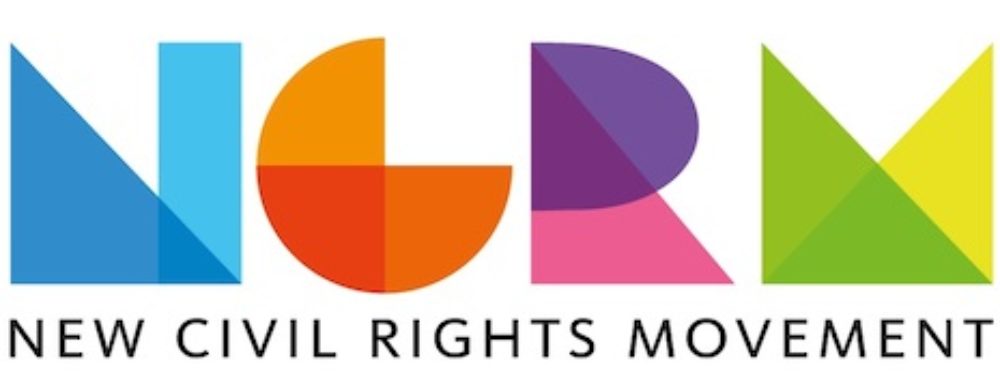
Enjoy this piece?
… then let us make a small request. The New Civil Rights Movement depends on readers like you to meet our ongoing expenses and continue producing quality progressive journalism. Three Silicon Valley giants consume 70 percent of all online advertising dollars, so we need your help to continue doing what we do.
NCRM is independent. You won’t find mainstream media bias here. From unflinching coverage of religious extremism, to spotlighting efforts to roll back our rights, NCRM continues to speak truth to power. America needs independent voices like NCRM to be sure no one is forgotten.
Every reader contribution, whatever the amount, makes a tremendous difference. Help ensure NCRM remains independent long into the future. Support progressive journalism with a one-time contribution to NCRM, or click here to become a subscriber. Thank you. Click here to donate by check.
 |

